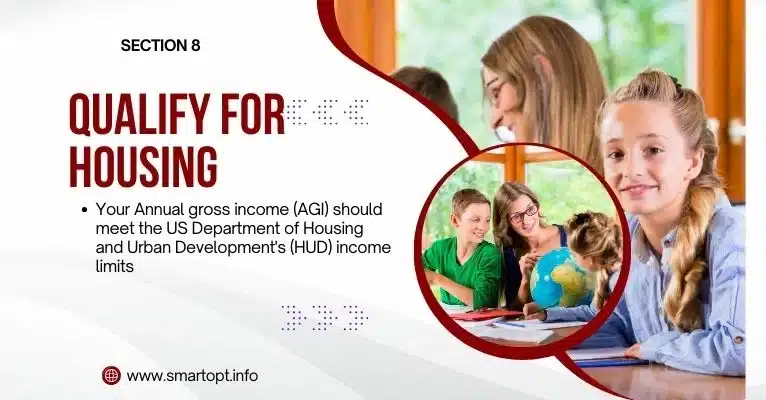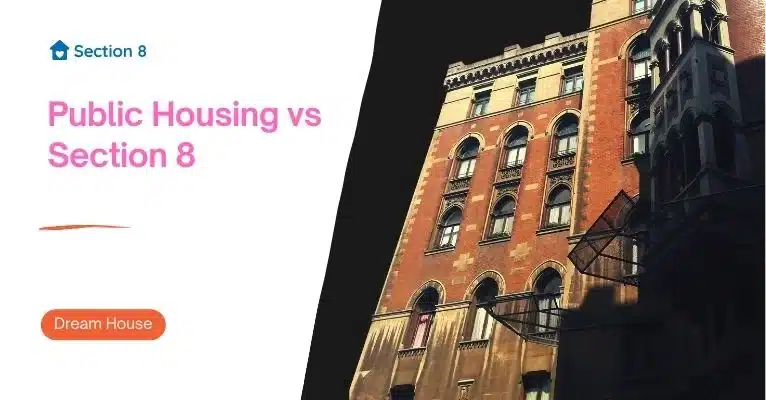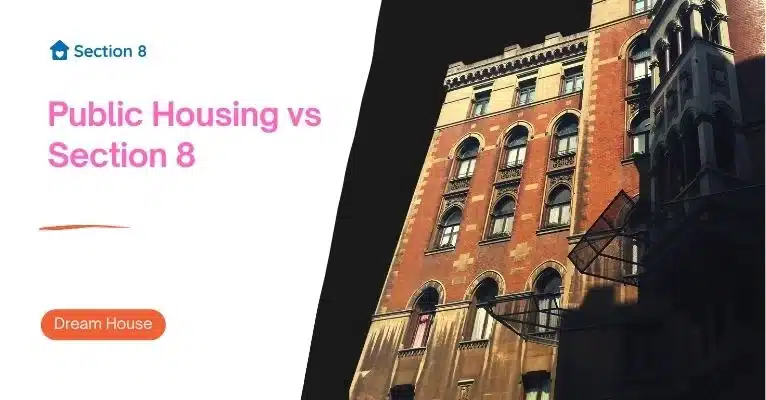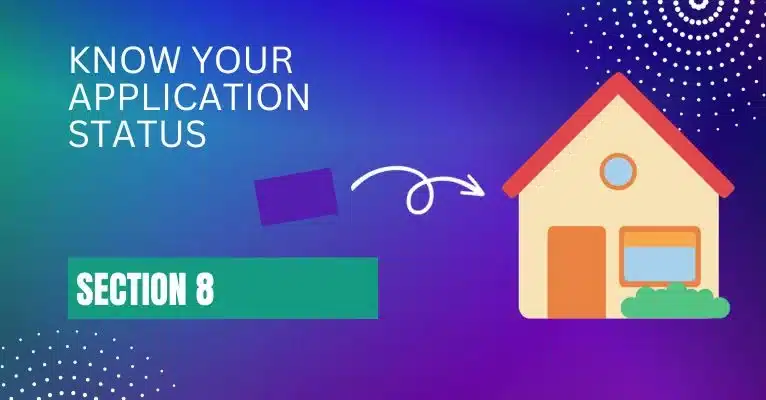Public Housing vs Section 8 – All You Need to Know
If you are searching for a home for your family, this article is here to help you seek that out by bringing all the pros and cons of public housing vs Section 8 so you can opt for an option that suits your lifestyle and caters to your priorities. Before digging deeper, you should know that these affordable housing options cater to low-income families. Now, let’s explore the differences these low-income housing have so you can better decide for yourself.
What is Public Housing?
This is a federally financed program that caters to families with low income in addition to disabled people and senior citizens of the United States of America. PHAs, i.e., regional public accommodation agencies, administer this program under the direction of HUD, i.e., the US Department of Housing and Urban Development.
PHAs facilitate low-income families by renting affordable housing that tends to be way cheaper than the standard market rates. The main catch that makes public housing affordable, if not free, is how families pay TTP, i.e., Total Tenant Payment based on the family’s annual gross income, AGI.
Public Housing Benefits
People find it affordable because it caters to families’ incomes, i.e., you will never have to pay more than you can afford as TTP will be based on AGI, making it an affordable housing option for low-income families. In addition, you tend to have easy access to transportation because the housing is more frequently based in areas with easy access to public transit and other local services, which adds to its convenience.
If you are wondering about the application process, then public housing surely has an upper hand here with a smooth and simpler application process. The Housing can be a great option for those needing approval via the Section 8 route.
If you have a history of evictions or any criminal record, a public housing program might be your best option. Suppose you are wondering why because a poor credit or criminal record of any sort makes you a less desirable tenant, end up limiting your options for low-and-middle-income. But let’s explore the reason behind this in further detail.
How do you qualify?
You must meet three conditions to qualify for public housing which are:
- Your Annual gross income (AGI) should meet the US Department of Housing and Urban Development’s (HUD) income limits
- You can qualify as a family, as a senior citizen, or as a person with disabilities
- Either you are a US citizen, or you have an eligible immigration status
Remember to provide your references as part of your application.
Income limits vary by the size of the family as well as the location of the property. As per the HUD program, you must have 80% of the median income for the county or metropolitan area where the property is to fulfill lower income limits. Similarly, having 50 percent of the median income qualifies you by fulfilling the low-income limit.
You might have to pay a security deposit to be eligible for public accommodation, following all the rules, i.e., lease terms and keeping the property in good shape. Notifying the HA of a change in income or family size is crucial. You can apply for public housing by contacting your local HA or HUS field office.
What is Section 8?
This is a specially designed assistance program funded by the US Department of Housing and Urban Development, known as HUD, which offers clean and safe low-income apartments to cater to low-income families, older people, and disabled people. Section 8 is also known as the Housing Choice Voucher (HCV).
HCV grant vouchers cover approximately 70% of low-income families’ rent and utility costs for housing, with families responsible for paying the remaining 30%. Another notable aspect of the housing vouchers is they do not necessarily need to be attached directly to specific units as vouchers can be issued directly to families, giving them greater flexibility – potentially even renting privately owned properties if their landlord allows.
Section 8 Housing Benefits
Now is the right time to discover all of the advantages offered by the housing program. Chief among them is that it offers affordable options without compromising security or basic needs – making this shelter financially feasible and attractive to many Americans. Further, it allows individuals to select living arrangements based on comfort, lifestyle, and mobility needs. So, recipients can rent apartments near schools with better educational resources or near their workplace, allowing them to select an option that best meets their lifestyle for long-term benefits.
The housing program emphasizes economic self-sufficiency as an indispensable condition of stable living free from eviction or homelessness. Local economies also reap benefits when the Section 8 money is reinvested back into communities where individuals live, enabling people to settle more safely than before in various neighborhoods and creating greater social integration between people from diverse communities. As a result, their local economies flourish further.
How do you qualify for Section 8 housing?

These are the requirements you will need to fulfill to land a housing voucher:
- Your total annual gross income (AGI) cannot exceed 50 % of the median income for the metropolitan area or county where the property is located.
- You have to meet the definition of family and size set by HUD.
- You must be eligible for the voucher, i.e., you are a US citizen or have a qualified immigration status, being part of a specified category of non-citizens.
- You must honestly provide financial information, including income and assets, along with your personal information, i.e., your social security number.
- Last but not least, clearing the PHA screening process is one of the requirements.
Being eligible does not mean you will receive assistance right away, as there is a possibility that you will be put on a waiting list until the availability of the aid by HUD.
Moreover, suppose you are an eligible candidate for housing voucher. In that case, you must fulfill a few requirements, i.e., following all lease and program requirements, paying your rent on time, maintaining the property in good shape, and lastly, notifying the PHA if any income or family size change occurs.
You can contact your local HUD OR PHA office to apply for Section 8.
What is the difference between public housing and Section 8?
Both programs offer income-based housing options to low-income individuals who fit the eligibility criteria set by HUD; however, they differ in operating strategy and the impact they create on local communities. Where Section 8 allows you to rent the housing of your choice, the public housing program comes with a comparatively shorter waiting list than Section 8. Nevertheless, both rental assistance choices have their ups and downs. You can use this article as a guide to make the right decision by carefully considering the ins and outs.
The primary difference concerns who owns and manages the properties, i.e., HUD manages both housing assistance programs (both are funded via government subsidies). Still, with Section, private landlords own their properties and choose to accept the housing vouchers compared to public housing, which is owned and operated by the government.
It is important to note that all private rental properties do not qualify for the program. After all, Section 8 vouchers opt to provide safe, secure, and clean accommodation at affordable rent. In addition, the landlord must stick to what is mentioned as Housing Choice Voucher Program requirements, i.e., providing services agreed upon in the program as part of the renter’s lease agreement and the PHA contract.
Public Housing Vs Section 8 Housing

Both are low-income housing assistance catering to families, the elderly, and disabled people. Let’s discuss the pros and cons of both programs so you can figure out which option suits you best:
Affordable housing
- Your income will decide the rent you will pay.
- Local PHAs will own and manage the housing units.
- PHA might make you wait more owing to the long waiting list.
- It may be located in less desirable areas that do not suit your lifestyle, job opportunities, educational priorities, etc.
- You do not have to go through a further renal application, i.e., a credit check, once PHA approves so that you can move in immediately.
Housing Choice Vouchers
- Rent is based on the income and the cost of the unit, as a landlord will privately own the property.
- The rented Units will be managed and owned privately.
- Owing to its popularity as the most famous rental assistance program, you might have to put up with a long waiting list and the lowest resources.
- You will have more flexibility to choose the location you want to rent in, considering the public transportation, your family’s educational needs, and job opportunities, making it a more convenient option.
- You might need help finding a landlord to accept your voucher. In addition, you will have to pass their background and credit check application process as well.
The decision between public housing vs Section 8 housing programs will greatly depend on your preferences and needs. Hence, it is imperative to consider the pros and cons meticulously to reach a beneficial decision, as both programs come with benefits that cater to different sets of people.
What Choosing
Both public housing and Section 8 programs offer income-based housing options to low-income individuals who fit the eligibility criteria set by HUD; however, they differ in operating strategy and the impact they create on local communities.
Where Section 8 allows you to rent the housing of your choice, public housing comes with a comparatively shorter waiting list than Section 8. Nevertheless, both rental assistance choices have their ups and downs. You can use this article as a guide to make the right decision by carefully considering the ins and outs.







